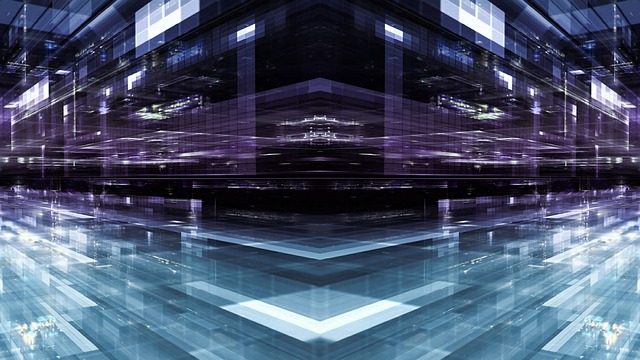In a shocking turn of events that has sent ripples through the electric vehicle industry, Tesla's German Gigafactory, a beacon of modern manufacturing and innovation, has become the target of a deliberate act of arson. This devastating incident has not only caused an estimated billion dollars in damages but has also forced the suspension of its production line, potentially setting back the clean energy giant's ambitions by a significant margin. The attack on such a pivotal facility raises numerous questions about security, resilience, and the future of electric vehicle manufacturing in the face of growing threats.
This in-depth article will explore the immediate and far-reaching consequences of the arson attack on Tesla’s German factory, delving into the details of the event itself in "A Fiery Blow: Arson at Tesla's German Gigafactory Incurs Billion-Dollar Damages". Next, we will assess the broader implications of this incident, from the operational disruptions to the financial strain in "After the Flames: Examining the Fallout from Suspended Production at Tesla". Finally, we look forward, considering the strategies and measures the company could adopt to bounce back from this setback in "Rekindling from Ashes: Tesla’s Path to Recovery Post-Arson Incident". Join us as we unpack the complexities of this unprecedented event and its impact on one of the most influential companies in the renewable energy sector.
- 1. A Fiery Blow: Arson at Tesla's German Gigafactory Incurs Billion-Dollar Damages
- 2. After the Flames: Examining the Fallout from Suspended Production at Tesla
- 3. Rekindling from Ashes: Tesla’s Path to Recovery Post-Arson Incident
1. A Fiery Blow: Arson at Tesla's German Gigafactory Incurs Billion-Dollar Damages
In an unprecedented attack on green technology and economic progression, Tesla's ambitious German Gigafactory was set aflame under the cloak of arson. This egregious act not only sends shockwaves across the green tech industry but also incurs a staggering blow to Tesla's financial standing and operational capabilities, amounting to damages of $1 billion. The meticulously organized facility, situated on the outskirts of Berlin, was envisioned as a cornerstone in Tesla's global strategy, aiming to bolster electric vehicle (EV) production and renewable energy solutions within Europe.
The arson, characterized by its sheer scale and audacity, has sparked an investigation with international implications. Preliminary reports suggest a targeted effort to hinder Tesla's expansion, rather than a random act of vandalism. The factory, which once buzzed with the promise of innovation and sustainability, now stands partially charred, a testament to the destructive intentions behind the act.
The ramifications of this event are multifaceted. Financially, Tesla grapples with the immediate billion-dollar cost incurred from the destruction of sophisticated machinery, infrastructure, and inventory – essential assets that were pivotal in the factory's operation. Furthermore, the cessation of production, albeit temporary, signifies a detrimental delay in the delivery of thousands of electric vehicles to the European market. This suspension not only impacts Tesla's bottom line but also disrupts the supply chain and affects consumer confidence in the electric vehicle market's reliability and stability.
The broader implications of this arson stretch far beyond the financial. This act of sabotage against a leading player in the green technology sector poses significant questions about security and resilience against anti-environmental sentiments or competitive sabotage. As Tesla works to rebuild and secure its facilities from future threats, the incident at the German Gigafactory serves as a stark reminder of the vulnerabilities facing enterprises at the frontier of technological and environmental innovation. The road to recovery and reassessment of security measures will be crucial in ensuring such a fiery blow does not derail the momentum towards a sustainable future.
2. After the Flames: Examining the Fallout from Suspended Production at Tesla
The arson at Tesla's German factory not only inflicted an estimated $1 billion in damages but has also initiated a domino effect of consequences due to the suspension of production activities. This disruption paints a complex picture of setbacks not only for Tesla itself but for its broader network of stakeholders, including employees, suppliers, and customers.
Firstly, the immediate suspension of production halts the manufacturing of Tesla vehicles, which is likely to significantly impact the company's delivery timelines. For a company that prides itself on innovation and meeting ambitious production targets, any delay can strain customer relationships and dent Tesla's reputation as a reliable manufacturer. Customers awaiting delivery of their electric vehicles may face extended waiting periods, potentially leading to cancellations and a shift towards competitors.
Moreover, the financial implications extend beyond the initial $1 billion in damages. The temporary shutdown means loss of production volume, which directly translates into lost revenue. For Tesla, which is in a phase of aggressive global expansion, this setback could hinder its momentum and affect its market share and profitability in the highly competitive electric vehicle sector.
The supply chain is another critical area affected by the production suspension. Suppliers who depend on Tesla’s orders for their business continuity might face significant financial stress. This could further have a ripple effect, causing disruptions in the supply of parts and materials, potentially affecting Tesla's production capabilities in other locations.
The suspension also has a human cost, impacting the workforce at the German factory. Employees may face uncertainty regarding their roles and job security during the downtime. While Tesla might endeavor to mitigate these effects, the morale and well-being of the workforce could be adversely affected, potentially leading to decreased productivity and changes in employee engagement.
Finally, Tesla's stock and investor relations could suffer in the aftermath of the arson. Investors, wary of the immediate financial losses and the uncertainty regarding the resumption of full production, might reconsider their stakes, leading to fluctuations in Tesla's stock price. This incident also raises concerns about security and risk management at Tesla's facilities, prompting investors to demand more stringent measures to prevent future incidents.
In conclusion, the fallout from the suspended production at Tesla's German factory extends far and wide, touching various facets of the company and its ecosystem. The challenge for Tesla will be not only to address the immediate damages and resume production but also to manage the broader implications on customer trust, supplier relations, employee morale, and investor confidence. The path to recovery will require a concerted effort to mitigate these impacts and safeguard against future vulnerabilities.
3. Rekindling from Ashes: Tesla’s Path to Recovery Post-Arson Incident
In the aftermath of the devastating arson attack on Tesla's German factory, which inflicted an estimated $1 billion in damages and halted production, the electric vehicle powerhouse is now charting a course toward recovery and resilience. This multi-faceted recovery strategy is tailored not only to repair physical damages and resume production but also to reinforce security measures, bolster community relationships, and ensure such a crippling setback does not recur.
At the core of Tesla's recovery plan is the rapid restoration of the damaged facilities. Tesla has mobilized an extensive network of construction, engineering, and technology experts to expedite the rebuilding process. The company's agile response, characterized by quick decision-making and efficient allocation of resources, is indicative of its commitment to minimize downtime and return to its ambitious production goals. Tesla's experience in rapidly deploying new technologies and scaling production capabilities is now being leveraged to not only restore but enhance the affected facilities, incorporating more robust fire safety and security measures, thereby future-proofing the plant against similar incidents.
Equally crucial to Tesla's recovery trajectory is the strengthening of its supply chain resilience. The incident underscored the vulnerabilities inherent in highly centralized production models. In response, Tesla is exploring avenues to diversify its manufacturing and supply chain operations, including increasing the redundancy of critical components and expanding its global manufacturing footprint. This strategic shift aims to mitigate the impact of localized disruptions, ensuring smoother operational continuity going forward.
Moreover, Tesla is actively engaging with the community and stakeholders to rebuild trust and reinforce its commitment to safety and environmental stewardship. This includes enhanced communication efforts, transparency about the steps being taken to prevent future incidents, and community outreach programs to foster stronger relationships with local populations. These initiatives not only serve to repair Tesla’s public image but also contribute to building a more resilient and community-oriented corporate culture.
In the cybersecurity realm, recognizing that the arson attack could have been facilitated by infrastructural vulnerabilities, Tesla is doubling down on its cybersecurity measures. The company is implementing cutting-edge security protocols, conducting rigorous vulnerability assessments, and fostering a culture of constant vigilance among employees. This comprehensive approach ensures that both physical and digital infrastructures are fortified against threats.
Finally, Tesla is navigating the financial implications of the arson with strategic savvy. The company is leveraging insurance covers, optimizing operational costs, and potentially exploring government support for recovery efforts. By maintaining a strong financial footing, Tesla ensures that its ambitious growth and innovation agendas remain on track despite the setback.
Through these concerted efforts, Tesla is not just aiming to recover from the arson incident but is looking to emerge stronger, more resilient, and better prepared for the future. The company’s comprehensive approach to recovery underscores its resilience and adaptability, setting a precedent for how businesses can rebound from adversity with strategic foresight and a commitment to innovation and community engagement.






























+ There are no comments
Add yours